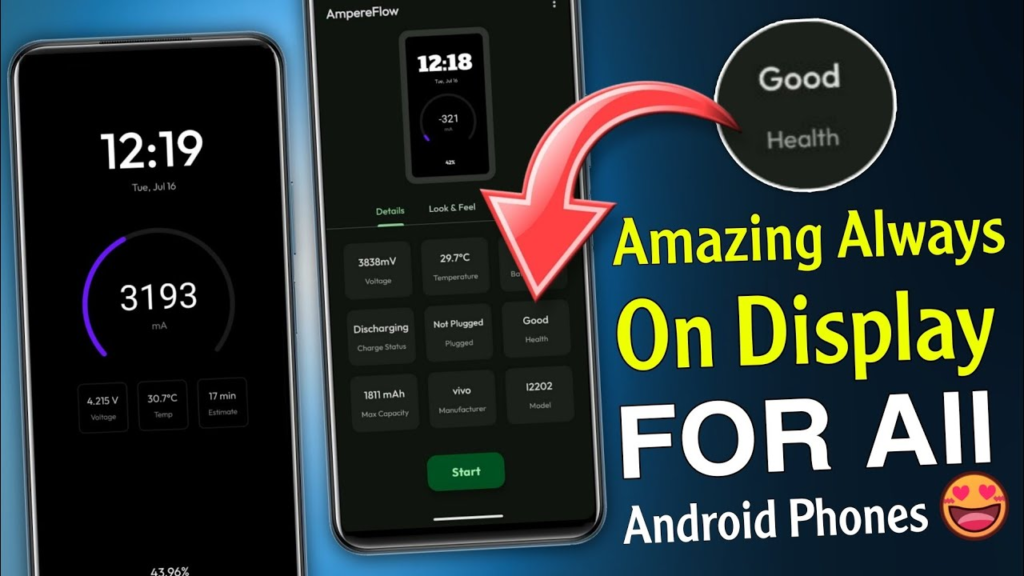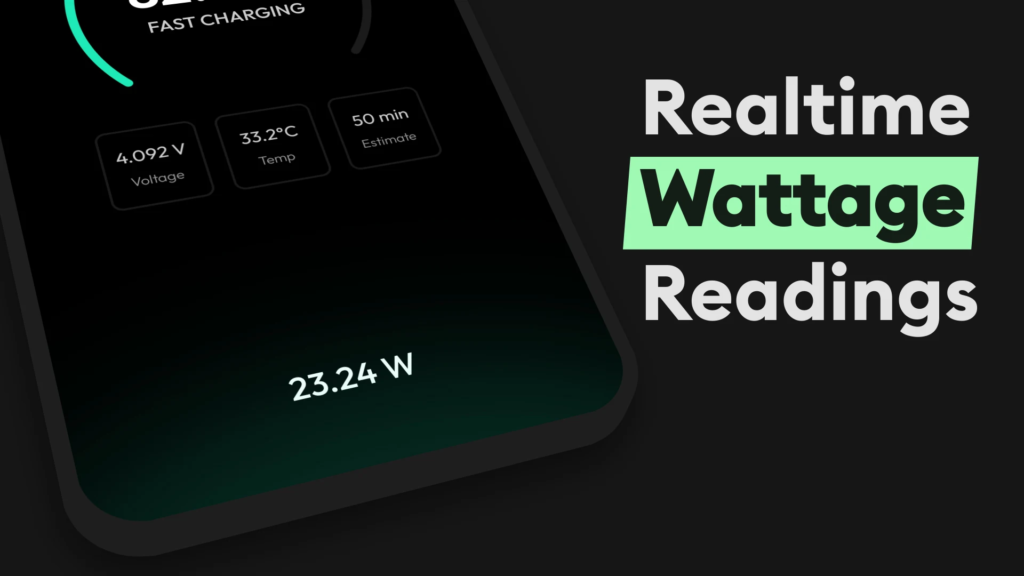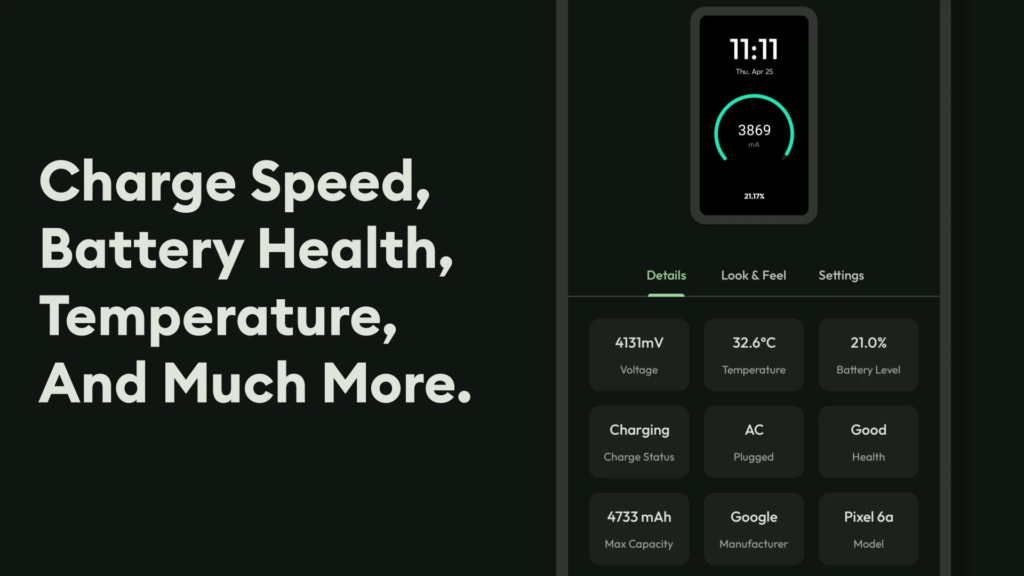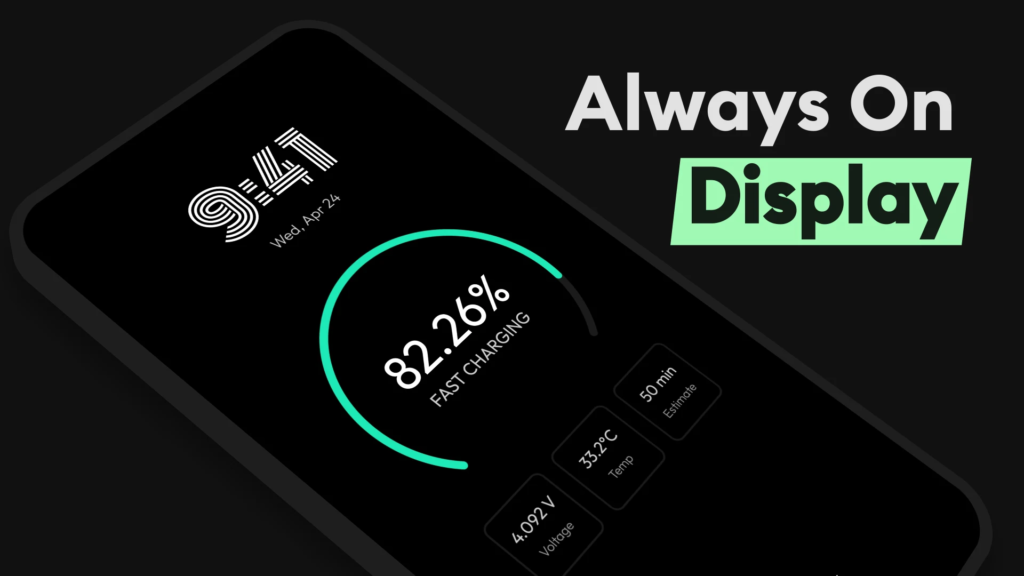Introduction
In today’s world, where technology drives innovation and convenience, the demand for efficient battery management systems has never been higher. As mobile devices, electric vehicles, and renewable energy sources proliferate, the need for tools that optimize battery performance and extend lifespan becomes paramount. The AmpereFlow Battery Speed AOD (Always-On Display) App emerges as a transformative solution, addressing these challenges head-on. This essay explores the app’s features, functionality, and the broader implications of its adoption in both consumer electronics and industrial applications.
Overview of Battery Management Challenges
Batteries are the lifeblood of modern technology. However, they come with inherent challenges, such as limited lifespan, inefficient charging cycles, and performance degradation over time. Common issues include:
- Capacity Degradation: As batteries age, their ability to hold charge diminishes, affecting the performance of devices.
- Charging Efficiency: Inefficient charging can lead to overheating and reduce battery life.
- Usage Patterns: Users often lack insights into their battery usage patterns, leading to suboptimal charging habits and unexpected power shortages.
The need for an intelligent battery management system that can monitor, analyze, and optimize battery usage is crucial in mitigating these issues.

Features of the AmpereFlow Battery Speed AOD App
The AmpereFlow Battery Speed AOD App is designed to tackle the challenges associated with battery management through a suite of innovative features:
1. Real-Time Monitoring
The app provides real-time data on battery health, charge cycles, and temperature. Users can view metrics such as remaining capacity, voltage levels, and current charge/discharge rates. This information is crucial for making informed decisions about charging and usage patterns.
2. Usage Analytics
AmpereFlow leverages advanced algorithms to analyze user behavior and charging patterns. By understanding how users interact with their devices, the app can provide tailored recommendations for optimizing battery life. For instance, it may suggest charging during off-peak hours or avoiding certain applications that drain the battery excessively.
3. Smart Charging
The app incorporates smart charging technology that adjusts the charging speed based on battery condition and usage patterns. This feature helps to prevent overheating and reduces stress on the battery, ultimately extending its lifespan.
4. Notifications and Alerts
Users receive timely notifications about battery health, charging status, and recommendations for maintenance. This proactive approach ensures that users can address potential issues before they lead to significant problems.
5. Customization Options
AmpereFlow allows users to customize their settings according to personal preferences and device capabilities. Whether it’s setting specific charge limits or creating profiles for different usage scenarios, the app provides flexibility to cater to diverse user needs.

The Impact of the AOD Feature
One of the standout features of the AmpereFlow app is its Always-On Display (AOD) functionality. AOD allows users to view critical battery information without unlocking their devices, providing convenience and enhancing usability. The implications of this feature are significant:
1. Enhanced Accessibility
Users can quickly check battery status, usage patterns, and health metrics at a glance. This reduces the need to navigate through multiple menus and settings, enhancing the overall user experience.
2. Increased Awareness
By having constant access to battery information, users become more aware of their charging habits and battery health. This heightened awareness can lead to more responsible usage, ultimately contributing to longer battery life.
3. Real-Time Adjustments
With AOD, users can make real-time adjustments to their device settings based on battery status. For example, if the battery level is low, they can quickly enable power-saving modes without having to delve into the settings.
Broader Implications and Future Directions
The introduction of the AmpereFlow Battery Speed AOD App signifies a shift in how we approach battery management. As the demand for sustainable technology continues to rise, tools that promote efficiency and longevity are essential.
1. Environmental Impact
By extending the lifespan of batteries and optimizing their usage, the AmpereFlow app contributes to reducing electronic waste. Efficient battery management can lower the frequency of battery replacements, which is crucial in the context of sustainability and environmental conservation.
2. Application in Electric Vehicles
The principles behind the AmpereFlow app can be applied to electric vehicles (EVs), where battery management is critical for performance and range. By adopting similar strategies, EV manufacturers can enhance user experience and encourage wider adoption of electric mobility.
3. Industrial Applications
Beyond consumer electronics, the principles of the AmpereFlow app can be extended to industrial applications, where battery management is vital for equipment reliability. Industries that rely on battery-powered devices can benefit from the app’s capabilities, enhancing productivity and reducing downtime.
Android Mobile Charging Methods
Charging your Android mobile device can be done through various methods, each with its own benefits and considerations. Understanding these methods can help you optimize charging speed, battery health, and overall device performance.

1. Wired Charging
Wired charging is the most common method and typically involves using a USB cable connected to a wall adapter or power bank.
- Types of Connectors:
- USB Type-C: Most modern Android devices use USB Type-C, which allows for faster data transfer and charging.
- Micro USB: Older devices often utilize micro USB connectors.
- Charging Speeds:
- Standard Charging: Generally around 5W (5V, 1A).
- Fast Charging: Many devices support fast charging (15W to 45W) through technologies like Qualcomm Quick Charge or USB Power Delivery (PD).
- Benefits:
- Fast and efficient.
- Can charge while using the device.
2. Wireless Charging
Wireless charging has gained popularity for its convenience and ease of use.
- How It Works: Utilizes electromagnetic fields to transfer energy from a charging pad to the device.
- Standards: Most Android devices support Qi wireless charging, which is widely used.
- Charging Speeds: Generally slower than wired charging, typically ranging from 5W to 15W, though some devices support faster options.
- Benefits:
- Convenient—no need to plug and unplug cables.
- Reduces wear on charging ports.
3. Reverse Wireless Charging
This feature allows a phone to charge another device wirelessly.
- How It Works: Similar to standard wireless charging, but the primary device acts as a charging pad.
- Use Cases: Charge accessories like wireless earbuds or other smartphones.
- Benefits:
- Adds versatility, particularly useful for accessories.
4. Power Banks
Portable power banks provide a flexible charging option when away from outlets.
- Capacity: Available in various capacities (measured in mAh), determining how many times it can recharge your device.
- Features: Many power banks support fast charging and may include multiple ports for charging multiple devices simultaneously.
- Benefits:
- Convenient for travel and outdoor use.
- Can charge multiple devices.

5. Solar Charging
Solar chargers use sunlight to convert solar energy into electricity.
- Use Case: Best suited for outdoor activities where traditional power sources aren’t available.
- Charging Speeds: Generally slower and more variable due to reliance on sunlight.
- Benefits:
- Eco-friendly and sustainable.
- Useful in remote locations.
6. Car Charging
Charging in a vehicle can be done through USB ports or dedicated car chargers.
- Types of Chargers:
- USB ports may provide standard charging speeds.
- Dedicated car chargers can offer fast charging capabilities.
- Benefits:
- Convenient for long drives or when traveling.
7. Smart Charging
Some devices come with smart charging features that optimize charging speeds based on usage patterns.
- How It Works: The device learns the user’s charging habits and adjusts the charging rate to improve battery longevity.
- Benefits:
- Reduces stress on the battery, potentially extending its lifespan.
Best Practices for Charging
- Avoid Overcharging: Many devices have built-in safeguards, but it’s still wise to unplug once fully charged.
- Use the Right Charger: Always use the manufacturer-recommended charger and cable to prevent damage.
- Keep Ports Clean: Regularly check and clean the charging port to avoid dust buildup, which can hinder charging.
- Monitor Battery Health: Use apps or built-in settings to check battery health and adjust charging habits accordingly.

Conclusion
The AmpereFlow Battery Speed AOD App represents a significant advancement in battery management technology. By providing real-time monitoring, usage analytics, smart charging capabilities, and enhanced accessibility through its AOD feature, the app empowers users to take control of their battery health and performance.
App Link
As the world moves towards more sustainable and efficient technologies, solutions like AmpereFlow will play a crucial role in shaping the future of battery management across various sectors. The adoption of such innovative tools is essential not only for enhancing user experience but also for promoting environmental sustainability and driving technological progress.

